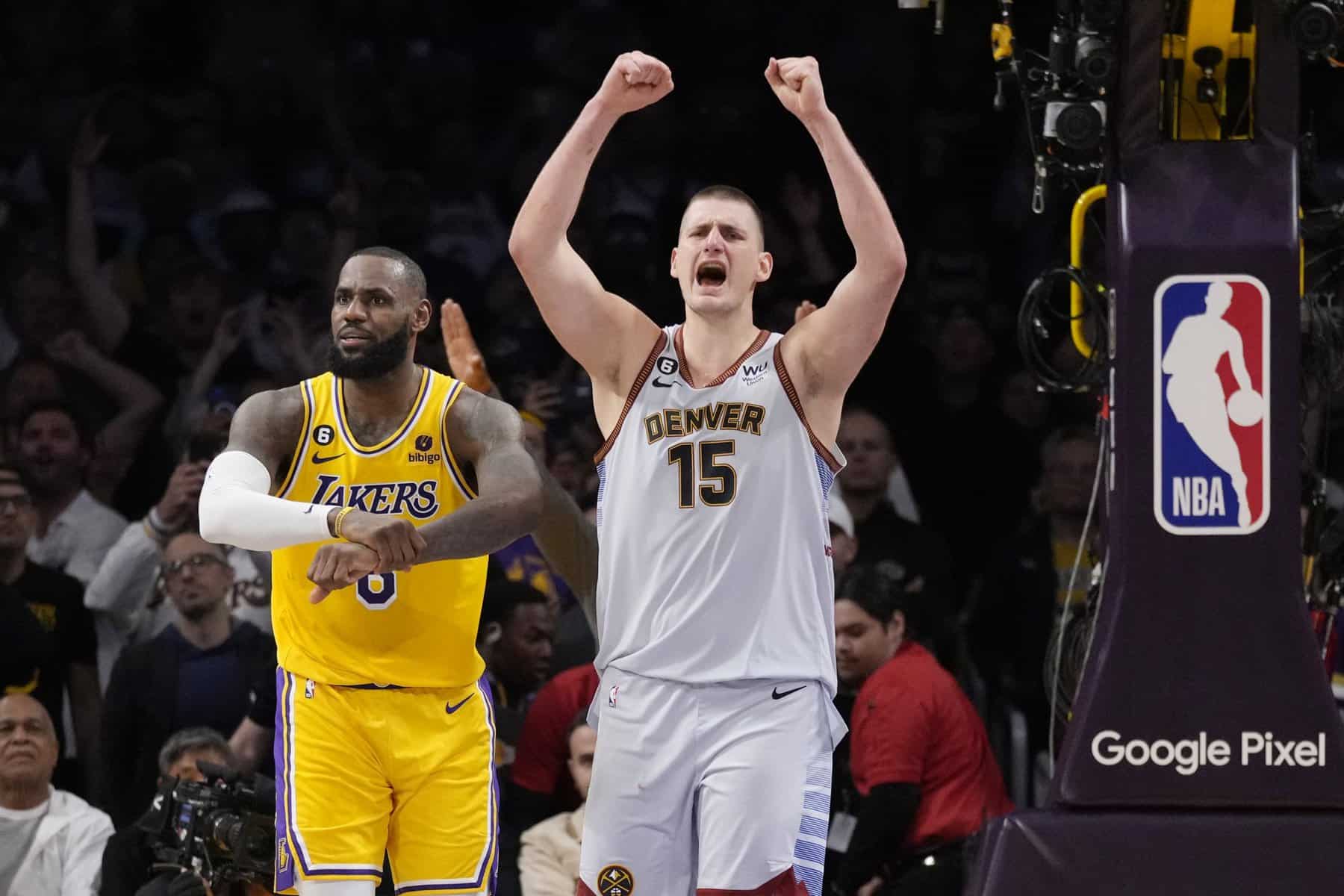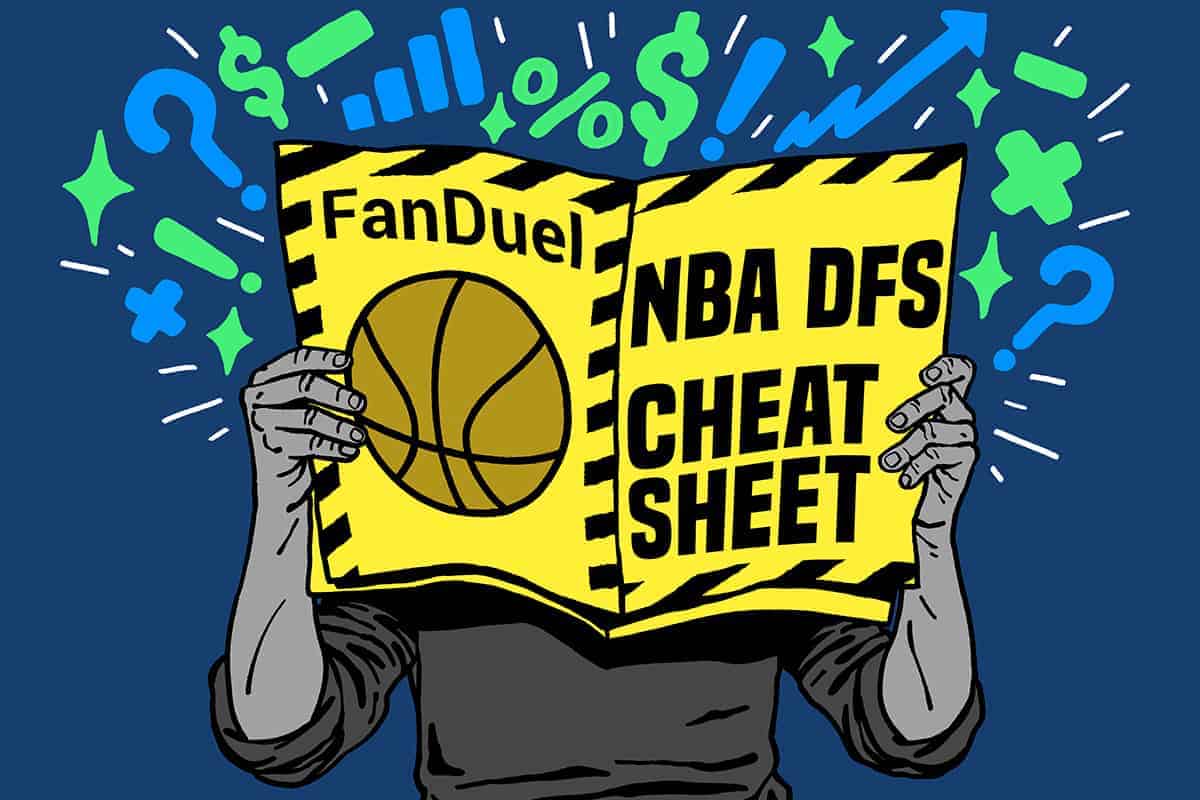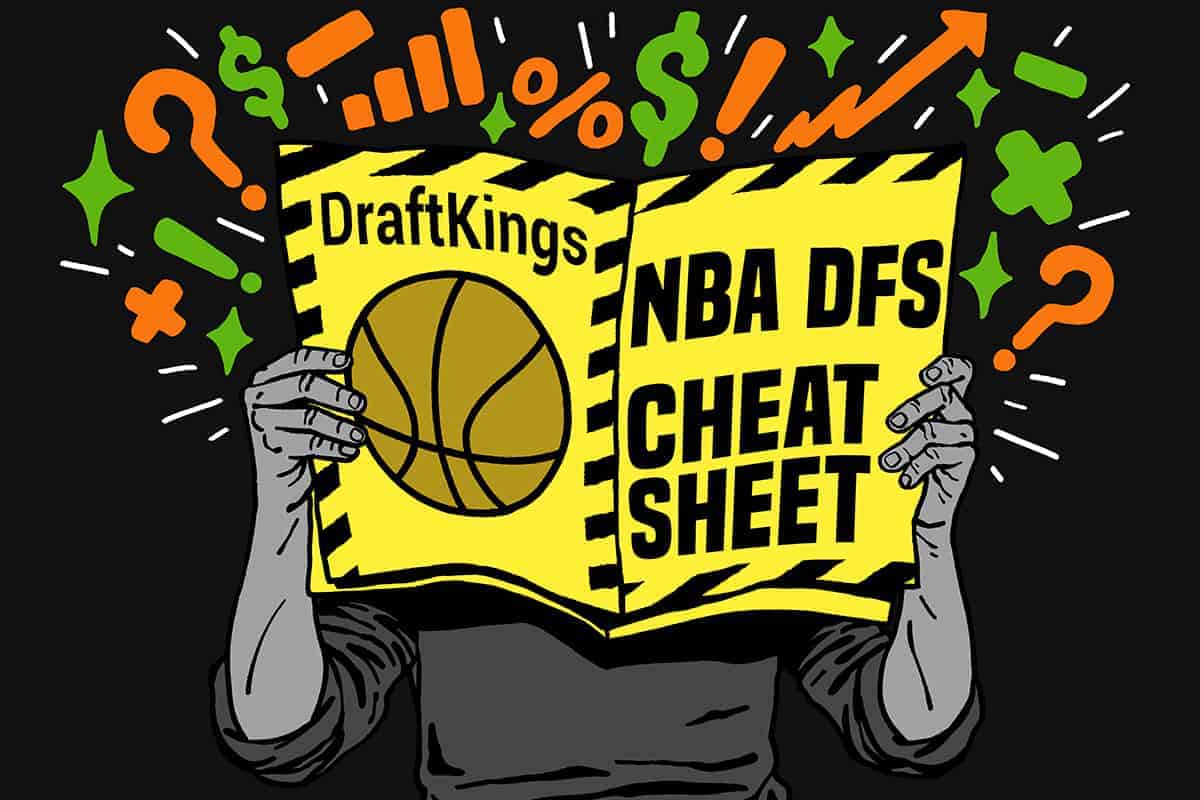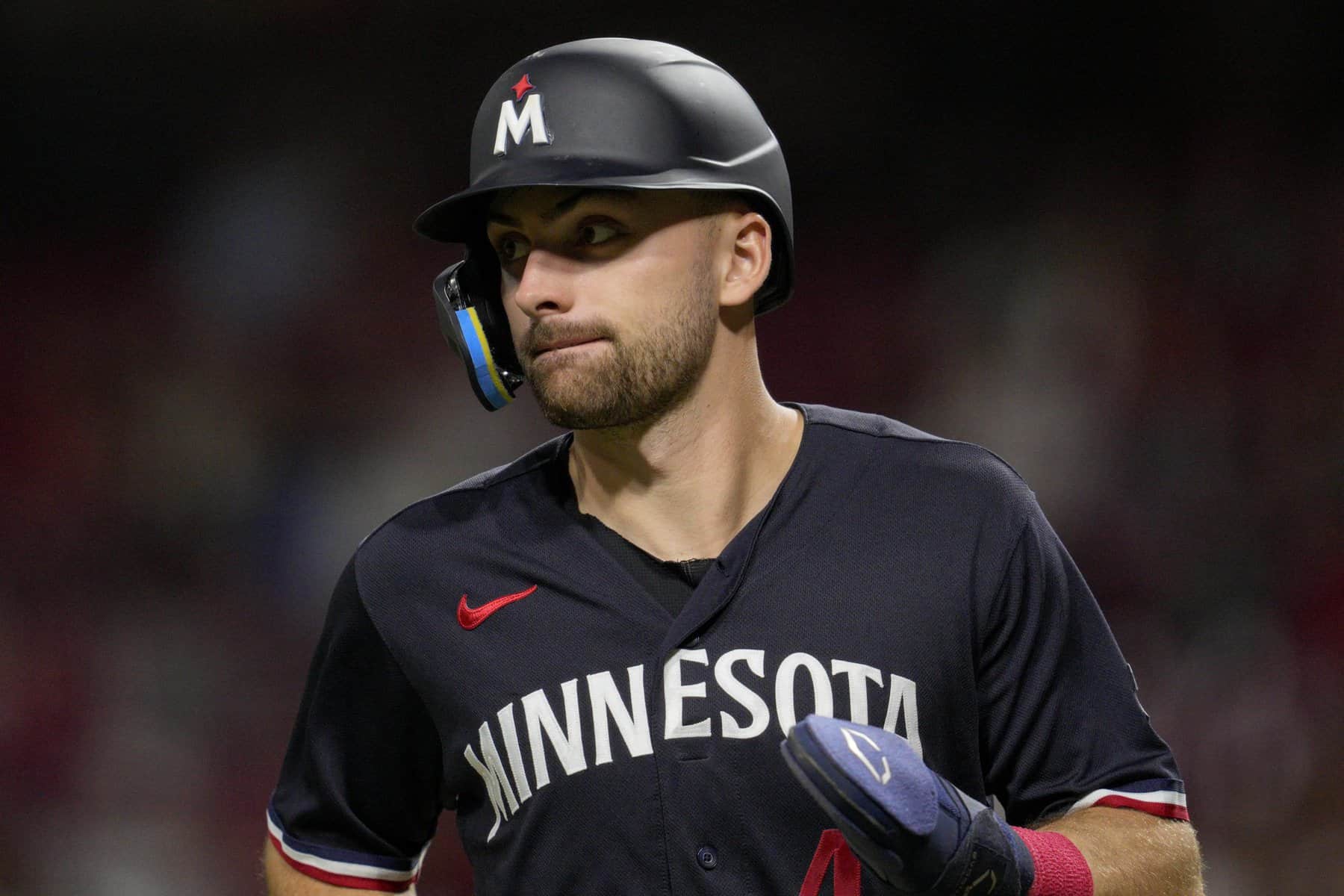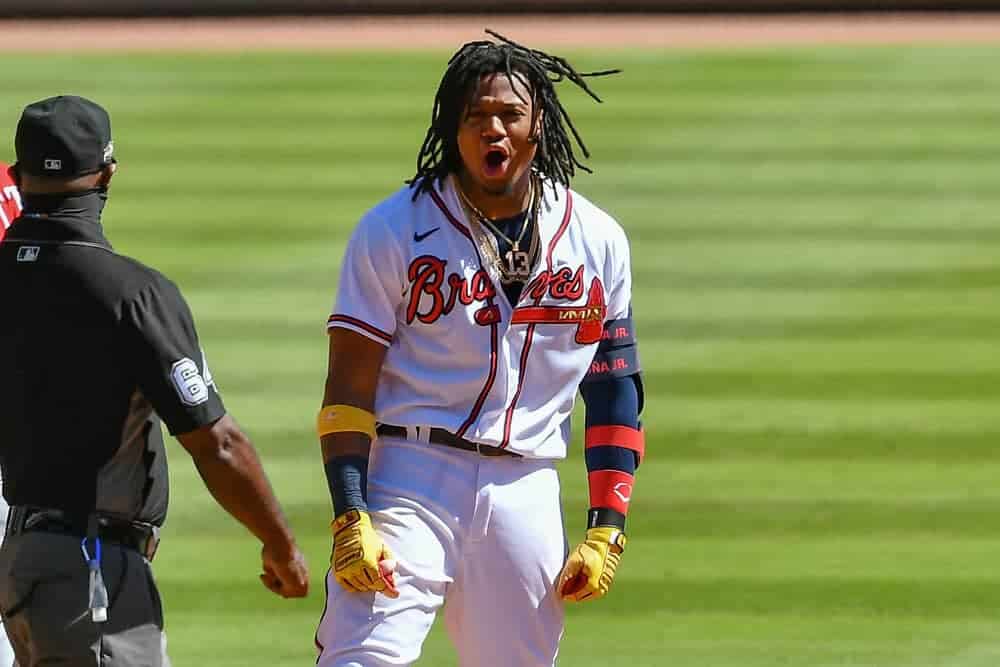On the High Stakes podcast I used to host for Stokastic, I interviewed DFS pros on a range of topics. There were a lot of recurring themes on the show, but the most relevant for this article: DFS pros love NFL Showdown.
That’s because a lot of casual fans enter the NFL DFS Showdown fray as a way to have some action on island games. As a result, DraftKings and FanDuel offer enormous contests with generous prize pools. The contests become more difficult to win when there are hundreds of thousands of entrants, but with a large portion of the new players being casual, the increase in difficulty pales in comparison to the increase in prize pools. It’s a tradeoff DFS pros will gladly make.
I’ll be writing a slate-specific NFL DFS Showdown article each Monday and Thursday this season focused on individual slates. There are three main components to discuss when it comes to Showdown, and I’ll break them down accordingly: Projection, correlation and differentiation.
DraftKings NFL DFS Showdown Strategy
Projection
The goal in DFS is to make the lineup that puts up the most points, and a natural starting point is looking at individual players who are likely to put up high scores or high point-per-dollar scores. Some pros run simulations or create their own projections to achieve this. Many others, like myself, rely on projections and tools published by others online to determine which players should be core pieces of our lineups. I primarily look at Stokastic’s projections and “Top NFL DFS Showdown Plays” Tool, which publishes results of advanced simulations runs by the Stokastic team.
Correlation
In NFL DFS, correlations are endless, both positive and negative. Some are obvious — quarterbacks have positive correlation with the receivers on their team. Some need a bit more research — how do kickers fare when a team’s backup running back exceeds his projection?
- Non-rushing quarterback at captain with at least two pass catchers. Generally, though not always, quarterbacks are more expensive than their pass catchers. But on each passing play, the pass catcher scores more fantasy points than the quarterback — not just a point for the reception, but more points per yard and touchdown. Thus, for a quarterback to be optimal, he typically needs to diversify the ways in which he scores points rather than throwing to one pass catcher over and over. Some quarterbacks can do this on the ground. For those who don’t do a lot of rushing, the path to being optimal in the captain spot is by throwing to more than one pass catcher. On rare occasions, a quarterback will score points by throwing to a teammate who is not in the DraftKings player pool. But more often than not, if you have a quarterback at captain who doesn’t put up points on the ground, you’ll need at least two of his pass catchers in flex spots.
- Rushing quarterback at captain with at least one pass catcher. If a quarterback puts up enough fantasy points on the ground, you may not need multiple of his pass catchers in the flex. But it would take a lot for a quarterback to be optimal at captain via his rushing alone. While I wouldn’t say it’s absolutely necessary to play a pass catcher in the flex along with a rushing quarterback, more often than not even a rushing quarterback will bring at least one pass catcher along for the ride.
- Non-rushing quarterback at flex with at least one pass catcher. Most likely, if you have a rushing quarterback in a flex spot, you’ll want at least one of his pass catchers elsewhere in your lineup. But there is some possibility that a rushing quarterback will rush for 50 yards and two touchdowns and will not give enough volume to any one pass catcher to bring him along. The same cannot be said for a non-rushing quarterback. If a non-rushing quarterback puts up enough fantasy points to be in the optimal lineup, chances are he’ll bring at least one pass catcher along with him, either in the captain spot or another flex spot.
Differentiation
Making highly projected lineups with smart correlations will separate you from the lowest level Showdown players, but there are many very smart casual players as well. Differentiation is the last step to separating pros from Joes.
In just about any DFS GPP, finding low-owned gems is key because lower ownership reduces the field of lineups you’re competing against when the player has a 99th-percentile outcome. Taking it to the extreme, just as a thought exercise, let’s say that Raheem Mostert scores 100 fantasy points on a Showdown slate. You’re not just going to need him, but you’ll need him in the captain spot (150 fantasy points). If 20,000 lineups in your contest have Mostert in the captain spot, you’ve essentially reduced the field of lineups you’re competing with to 20,000. If only 200 lineups have Mostert at captain? Now we’re talking.
On NFL Showdown slates there is an additional factor for large field GPPs. We don’t just want to find seldomly used players; we want to find seldomly used LINEUPS. Why? Well, I’ll give you two examples from 2021:
- On September 20, 2021, DraftKings had a Milly Maker for the Packers vs. Lions tilt, but the top lineup was duplicated 231 times. Rather than winning a million dollars, the users who entered those 231 lineups had to split the top 231 prizes, for just a bit over $6,000 each. That’s despite having everything go their way, which requires an extreme amount of luck.
- On October 11, 2021, we saw the other end of the spectrum: user rcoho1984 played a unique lineup in the Ravens vs. Colts Milly Maker, taking home not just a million dollars but a ticket to the Tournament of Champions.
If you’re going to win — which takes a lot of luck, regardless of how well your lineup projects — I’d suggest making it count. I’m not necessarily concerned with making an entirely unique lineup like rcoho1984 did every single time, but I aim to be a lot closer to their unique lineup than those that were duplicated 231 times.
Latest NFL DFS Content
- Want to Learn How to Win a DraftKings Milly Maker With Stokastic Sims? Steve Buzzard Will Tell You How
- PrizePicks, Sleeper & Underdog Cheat Sheet: Best More/Less Picks Today for NFL (February 11)
- DraftKings NFL Cheat Sheet: Super Bowl Sims Picks | George Kittle
- NFL Super Bowl 58 DFS Picks: 49ers vs. Chiefs (February 11)
- NFL DFS Captain Picks for Super Bowl 58: Rashee Rice, George Kittle & More
- Stokastic DFS on Youtube
Some Easy Tricks
Low-owned players. Yup, even if you’re using other tricks to get unique, it’s still a good idea to play a few players who won’t be getting much ownership.
Embrace lineups missing some correlation pieces or even with some negative correlation. Generally, highly correlated lineups will be over-owned, whereas the field will avoid negative correlation at all costs. In some of my lineups, I like to see the following:
- Quarterback against opposing Defense. The negative to this correlation is obvious: when a defense does well, it generally means they forced a lot of turnovers or kept the opposing offense in check. The quarterback even loses a fantasy point when he throws an interception. On the flip side, though, is the best-case scenario: if a quarterback throws a pick six, the defense gets a major boost, while the quarterback only loses one fantasy point, gets the ball right back and might be in a better game script for passing. Even better if the defensive touchdown is not via the quarterback or better yet, through special teams.
- Pass Catcher at captain without including the quarterback at flex. It works more often than you’d think! Remember, on every passing play, the receiver scores more fantasy points than the quarterback. Often at a lower salary, too. But the field, by and large, will immediately want to throw the quarterback in at the flex spot as soon as they decide on a pass catcher at captain. I’m not saying you should avoid doing so in every lineup, just that you should consider some lineups without the pass catcher’s quarterback in the flex as a way to get unique.
- Multiple Running Backs from the same team in a lineup. Is there negative correlation here? Probably. I’ll get back to you. But it’s certainly not to the extent the field avoids it in favor of picking a back and hoping he’s the bell cow. In some spots this works for other positions, too – last year we saw a lineup with both Chargers tight ends split a Milly four ways.
Leave salary on the table. I kind of buried the lede here. This is the easiest way to lower your duplicates. Casual players assume that if they have salary left over, they should upgrade. The problem with this approach is that it almost inevitably leads to highly duplicated lineups. How much salary should you leave on the table? That’s up to you. A couple of things to consider:
- If we assume salaries are efficient, every bit of salary you don’t use makes your lineup a bit less likely to win. It also increases your probability of having a unique lineup significantly, to a point. It’s a sliding scale based on your risk tolerance and goals, but I’d recommend leaving at least $600 on the table, and on most slates if you’ve left $6,000+ on the table you’ve probably gone too far.
- The Stokastic Showdown tool does not assume you will be leaving salary on the table. I still use it heavily in shaping my player pool, but it’s something to keep in mind. If a $200 player is optimal 8% of the time, for example, that might be because in many sims that player’s two fantasy points allowed for a lineup with great players in every other spot — using the full salary cap. The player could be optimal significantly less in lineups with a lot of salary left over. On the other hand, the same player might be projected for 12% ownership for the same reason — they allow great-looking lineups. But that player may be virtually unowned in lineups that leave salary on the table because the only people doing so are playing them for the purpose of getting all their studs in.
- Consider the lineup as a whole when deciding how much salary to leave on the table. It’s easy to think in terms of 1-for-1 swaps. Some may be inclined to build out the perfect lineup, using full salary, and then swap out the $9,000 receiver for a $2,000 receiver. Your lineup is likely to be a lot more unique now, leaving $7,000 on the table. It might even be the case that your $2,000 receiver has a pretty good shot at outscoring the $9,000 receiver. But that $7,000 you’ve left on the table can be used at ANY spot in your lineup. How likely is it that each player in your lineup will outscore every player up to $7,000 more expensive? How likely is it that EVERY player in your lineup will outscore every player up to $7,000 more expensive? These are the things to consider when deciding how much salary to leave on the table.

